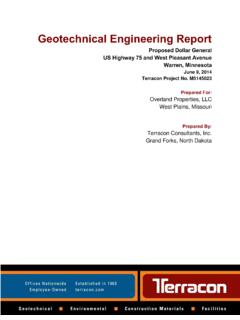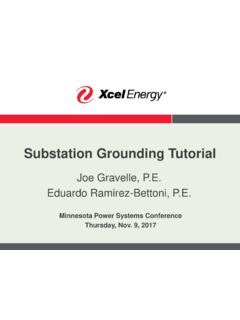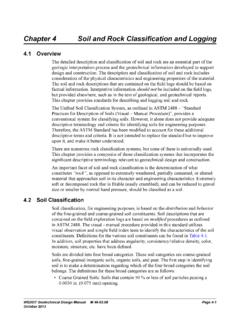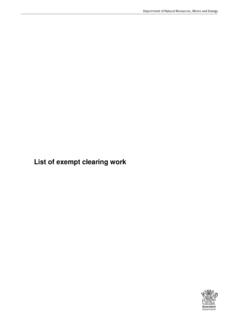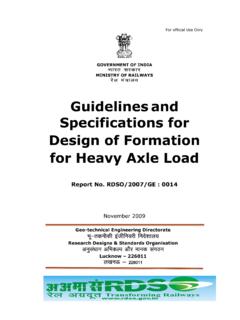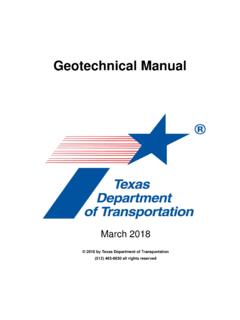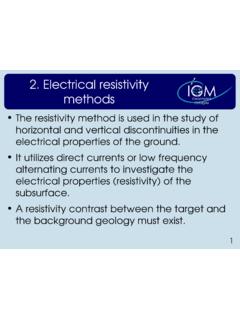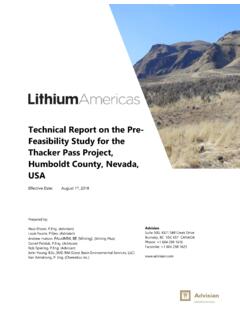Transcription of GEOTECHNICAL INVESTIGATION REPORT
1 GEOTECHNICAL INVESTIGATION REPORT SOIL INVESTIGATION REPORT FOR STATIC TEST FACILITY FOR PROPELLANTS AT BDL, IBRAHIMPATNAM. Graphics Designers, M/s Architecture & Engineering 859, Banjara Avenue, Consultancy Services Pvt. Ltd (6-3-597/A/12/A/6B), Plot No-91, Unit 9, Bhoinagar, Hyderabad - 04 Back side of Sahidnagar Police station Bhubaneswar - 02 GEOTECHNICAL INVESTIGATION REPORT : ARCHITECTURE & ENGINEERING CONSULTANCY SERVICES PVT.
2 LTD. CONTENTS Chapter No. Particulars Page No One Introduction 01 Two Field Operations 02 - 03 Three Information about Laboratory Tests 04 - 05 Four Bore Logs 06 - 10 Five Laboratory Test Results 11 - 15 Six Calculation of Safe Bearing Capacity and settlement 16 - 65 Seven Calculation of Safe Bearing Capacity of Rock 66 Eight Analysis of the Sub Surface INVESTIGATION 67 - 68 Nine Abstract of Safe Bearing Capacity (SBC) 69 - 70 Ten Conclusion and Recommendations. 71 Eleven Location Map 72 GEOTECHNICAL INVESTIGATION REPORT : ARCHITECTURE & ENGINEERING CONSULTANCY SERVICES PVT.
3 LTD. Chapter One: Introduction Sub-surface exploration plays an important role in the design for the construction of buildings and bridges. Before design, it is essential to study the behavior as well as the engineering properties of the sub-surface strata, which promotes the design more economic and perfect. It also enables to take precaution in the design for the structural safety. Soil INVESTIGATION for Static facility for Propellants at BDL, Ibrahimpatnam was decided to be designed on the basis of the sub-surface INVESTIGATION test results.
4 As such, the Graphics Designers, Hyderabd entrusted the sub-surface INVESTIGATION work to M/s Architecture & Engineering Consultancy Services Pvt. Ltd vide work order No. GD/AECS/2014-272 and Date:-13/05/2014. The scope of work comprised of boring five boreholes at site. The fieldwork included making of boreholes by Wash/Rotary Boring method. The scope also included conducting Standard Penetration Tests at regular intervals and collecting soil/rock samples for identification and logging purposes, and the collected soil and rock samples were tested in the Base Laboratory and the data were analyzed.
5 Based on the above, this REPORT presents the Bore Logs, Laboratory & Field Test results. On the basis of field & laboratory test results and their analysis, suitable foundations have been suggested. GEOTECHNICAL INVESTIGATION REPORT : ARCHITECTURE & ENGINEERING CONSULTANCY SERVICES PVT. LTD. Chapter Two: Field Operations General: In an attempt for optimization in the design of foundation for the proposed structure to be constructed at this site, Geo-technical INVESTIGATION was done. The entire INVESTIGATION work had been divided mainly into two parts.
6 (i) Field works & (ii) Laboratory tests. Field works determine the types of sub-soil deposit and their characteristics. Laboratory tests help in determining the relevant geo-technical properties of the sub-surface deposits leading to finalization of foundation depth of the structure basing on Bearing Capacities of the foundation strata as well as the influence zone. Final depths of boring and observation of water table for each borehole are given below. Boring & In-Situ Tests: Wash/Rotary boring method was adopted to bore holes to the required depth. UDS & SPT were conducted at regular intervals and the soil samples were brought to the laboratory with proper identification and labeling.
7 Standard split spoon sampler was used for conducting Standard Penetration Test. The number of blows required to drive the sampler for the 1st, 2nd & 3rd 15cm depths were recorded. The total number of blows required to drive the split spoon sampler due to the free fall of a hammer through a distance of 75 cm for the 2nd and 3rd 15cm penetration were taken together as the field N value or the standard penetration test (resistance) of the soil. After the penetration to full depth, the sampler was carefully pulled out. The cutting shoe and the head were removed.
8 The soil samples were then sealed in polythene bags and labeled properly by indicating the depth of bore hole mark, reference no. etc for visual inspection and identification of soil samples for logging of the bore holes. The field N values recorded at various depths have been reported in the summarized data sheet. Test results of soil samples & their bore logs were presented separately in the sub-soil REPORT . Based on the above, this REPORT presents the Bore Logs, Laboratory & Field Test results. GEOTECHNICAL INVESTIGATION REPORT : ARCHITECTURE & ENGINEERING CONSULTANCY SERVICES PVT.
9 LTD. Undisturbed soil samples were carefully extracted in such a manner that the moisture content and structure of soil did not get altered. Standard open tube sampler was used for the collection of undisturbed soil samples. Each end of the sampling tube was carefully sealed with wax, the bore hole number and depth were indicated on the tube for proper identification. Sampling: Representative soil samples were collected from the borehole confirming to IS: 1892-1979. Collected samples were properly sealed in polythene bags and labeled for proper identification during testing.
10 The disturbed samples were used for classification of soils as per IS: 1498-1970. Ground Water Table: Observation of ground water table is important since it influences the bearing capacity of soil in different seasons. When the foundation remains submerged under water the bearing capacity is to be calculated considering the water table correction factor. Therefore while conducting tests during dry season, it is always necessary to enquire about the ground water table level. Bore Hole No. Termination Depth in m. Water Table from the in m. BH 1 m. Not encountered within the drilling depth BH 2 m.
